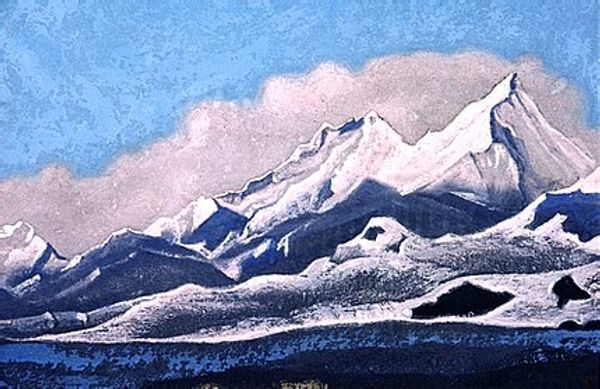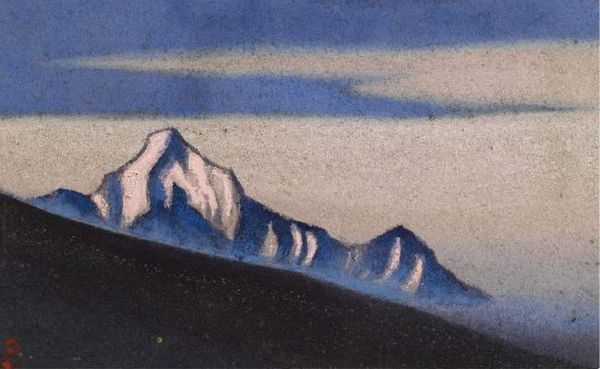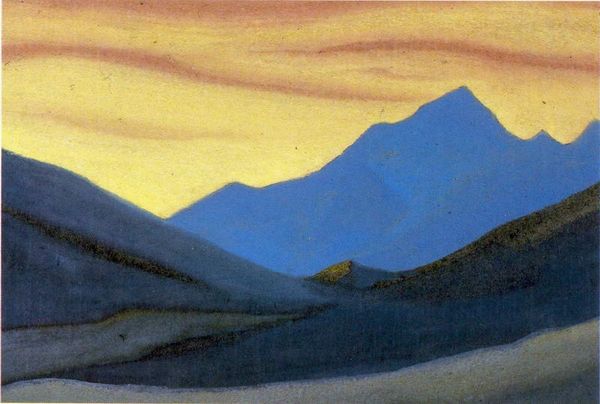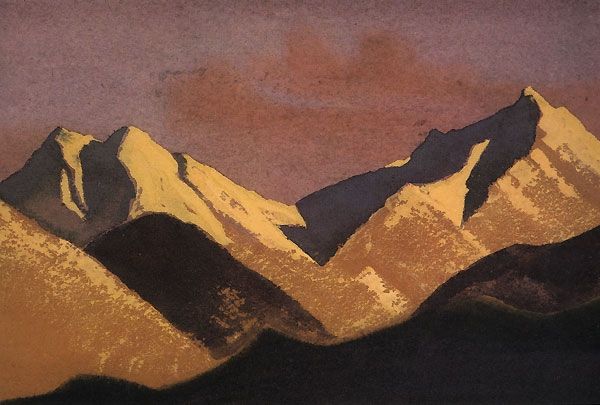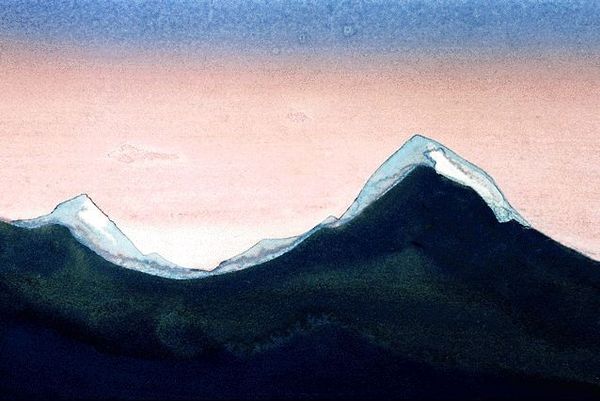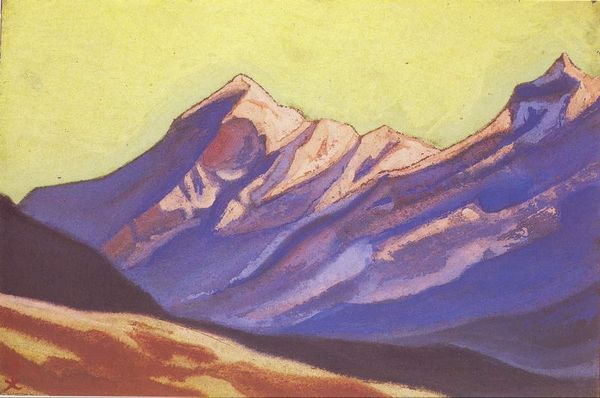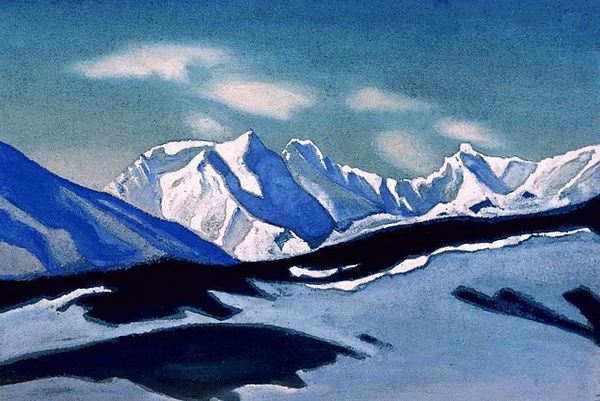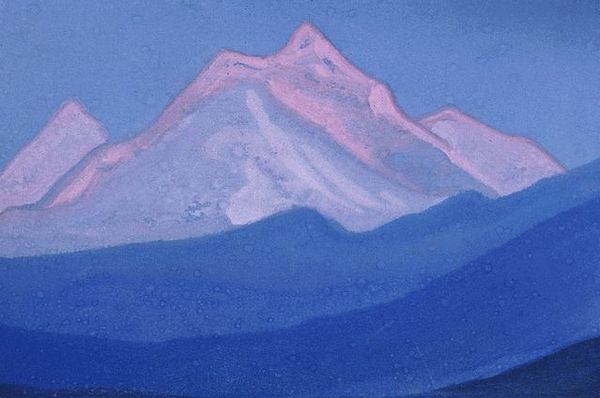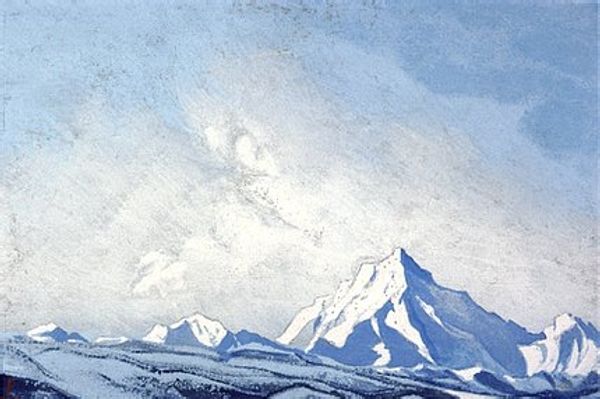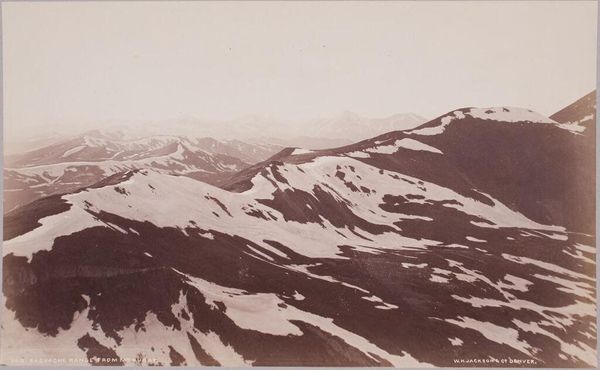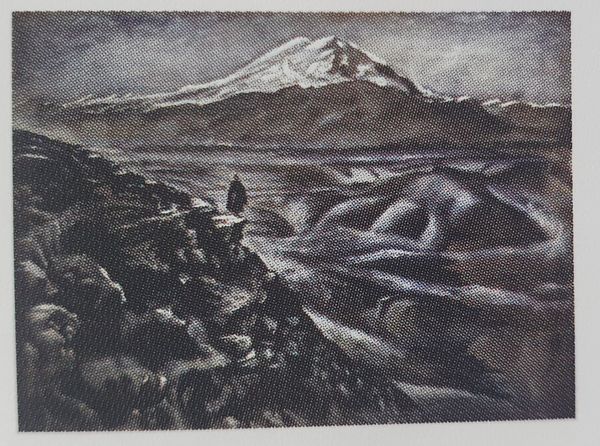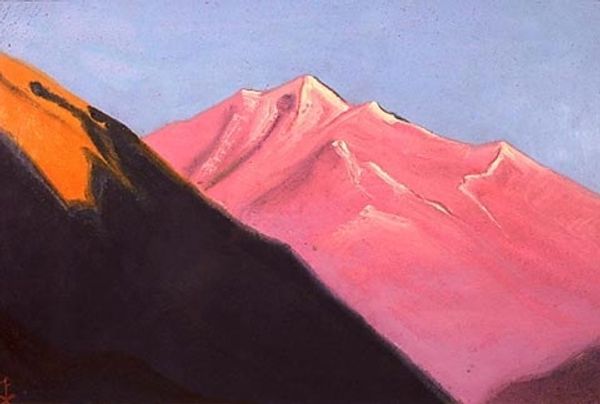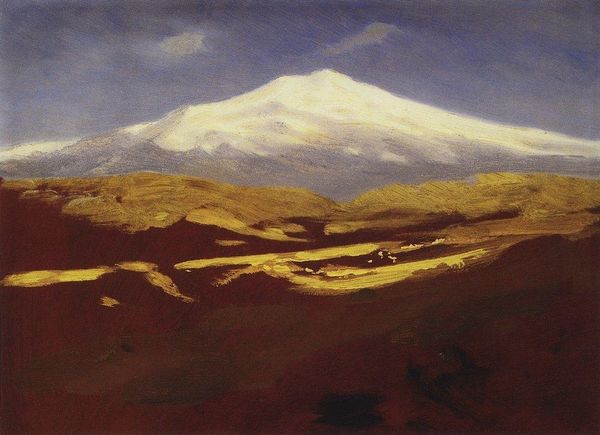
plein-air, oil-paint
#
tree
#
snow
#
sky
#
plein-air
#
oil-paint
#
landscape
#
impressionist landscape
#
oil painting
#
romanticism
#
mountain
#
cloud
#
natural-landscape
#
hudson-river-school
#
nature
Copyright: Public domain
Curator: Here we have what appears to be "Early Winter in the Sierra Nevada," an oil-on-canvas landscape of considerable tonal range. What is your first impression? Editor: My immediate reaction is its somber mood. The oppressive sky looming over the stark, snow-covered peaks makes it a striking contrast between the delicate snow and the sheer, raw physicality of the mountains. The density of the cloud cover gives it an emotional heft that cannot be denied. Curator: Indeed. The piece offers a dramatic interplay between light and shadow. Note how the artist orchestrates a visual rhythm through the layering of forms: the sharp lines of the mountain range set against the rounded forms of the clouds. We are made witness to his deep engagement with romanticism's artistic structure. Editor: I’m drawn to think about the plein-air process; to confront that vast expanse of space demands physical endurance from the artist. You know, the labor involved must've been intense. Consider too the transportation of supplies needed in that harsh climate! Curator: Interesting observation. From my point of view, such anecdotal concerns serve merely as supporting evidence that validates pre-existing codes of romanticism in 19th century landscapes; codes involving scale and subjective emotional experience as a way to structure meaning. Editor: Still, it cannot be simply dismissed. What resonates for me are the conditions that facilitated its very making—not only how those oil paints were manipulated by the hand, but who might have been involved with pigment production. Were any women working behind the scenes involved? Curator: Of course, this could influence an interpretative possibility of some kind, yet ultimately, the structural tension of form resists any materialist reduction; this is a picture first and foremost which offers powerful semiotic possibilities. Editor: I concede the inherent structural dynamics are intriguing. Still, one must not completely forget the circumstances behind production, reception, and possible exchange surrounding the artwork. Curator: Perhaps… a point well-considered, prompting future visual re-evaluations. Editor: Yes, it's in exploring these dualities, between the immediate aesthetic experience and material conditions of artwork production, that true critical appreciation comes alive.
Comments
No comments
Be the first to comment and join the conversation on the ultimate creative platform.
